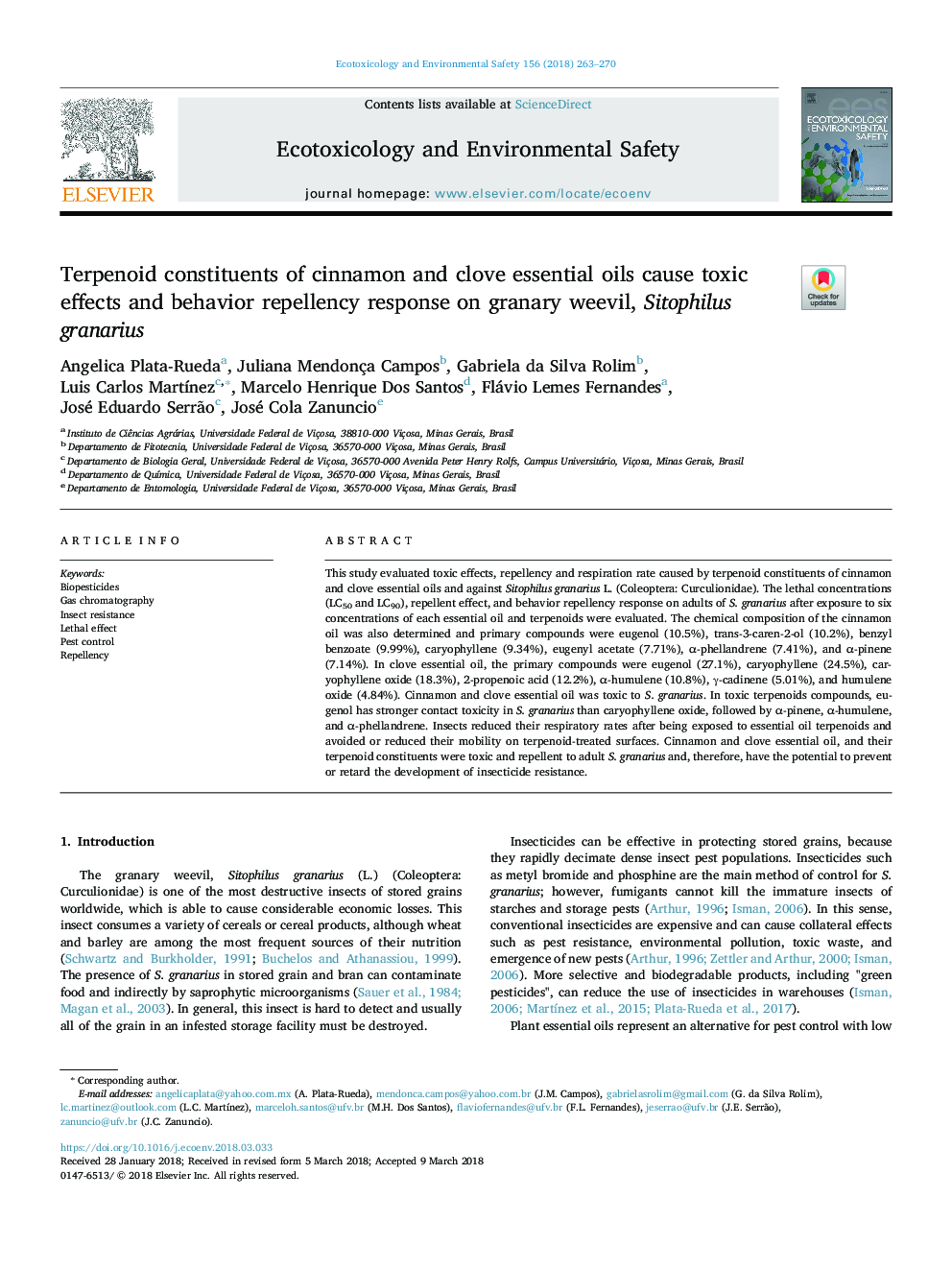| Article ID | Journal | Published Year | Pages | File Type |
|---|---|---|---|---|
| 8854013 | Ecotoxicology and Environmental Safety | 2018 | 8 Pages |
Abstract
This study evaluated toxic effects, repellency and respiration rate caused by terpenoid constituents of cinnamon and clove essential oils and against Sitophilus granarius L. (Coleoptera: Curculionidae). The lethal concentrations (LC50 and LC90), repellent effect, and behavior repellency response on adults of S. granarius after exposure to six concentrations of each essential oil and terpenoids were evaluated. The chemical composition of the cinnamon oil was also determined and primary compounds were eugenol (10.5%), trans-3-caren-2-ol (10.2%), benzyl benzoate (9.99%), caryophyllene (9.34%), eugenyl acetate (7.71%), α-phellandrene (7.41%), and α-pinene (7.14%). In clove essential oil, the primary compounds were eugenol (27.1%), caryophyllene (24.5%), caryophyllene oxide (18.3%), 2-propenoic acid (12.2%), α-humulene (10.8%), γ-cadinene (5.01%), and humulene oxide (4.84%). Cinnamon and clove essential oil was toxic to S. granarius. In toxic terpenoids compounds, eugenol has stronger contact toxicity in S. granarius than caryophyllene oxide, followed by α-pinene, α-humulene, and α-phellandrene. Insects reduced their respiratory rates after being exposed to essential oil terpenoids and avoided or reduced their mobility on terpenoid-treated surfaces. Cinnamon and clove essential oil, and their terpenoid constituents were toxic and repellent to adult S. granarius and, therefore, have the potential to prevent or retard the development of insecticide resistance.
Related Topics
Life Sciences
Environmental Science
Environmental Chemistry
Authors
Angelica Plata-Rueda, Juliana Mendonça Campos, Gabriela da Silva Rolim, Luis Carlos MartÃnez, Marcelo Henrique Dos Santos, Flávio Lemes Fernandes, José Eduardo Serrão, José Cola Zanuncio,
